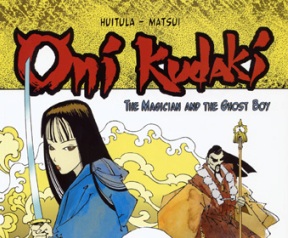The second coming of rockers Hanoi Rocks has lasted already six years. That’s as long as the classic period of the band lasted in the eighties. Obviously, these last six years haven’t been as intense, but the new Hanoi Rocks almost has their third album ready since its rebirth to be release in September.
Like Jagger and Richards, The Muddy Twins are two very different characters: in a colourful pink jacket, Monroe speaks and moves fast and loud, whilst McCoy breathes deeply and mutters. One is the diva, the other, the gypsy. But both sound positive about the upcoming album: “it’s going to be a very strong record”, the singer says. “Now the band is perfectly balanced, which it was not before when we were still searching around”, the guitarist adds.
Former Electric Boys members, Swedes Conny Bloom (guitar) and Andy (AC) Christell (bass), brought the needed stability to the band in 2005. “It took until now to make the band into a strong unit”. This unity will be reflected on the new album. “For this record we have worked as a band from the start”, Monroe explains. “On the previous album we started recording just Andy, our drummer Lacu and me. It took a long time and there were lots of overdubs, so it was difficult to mix. Now we have the basics: drums, guitars, bass, vocals and some overdubs, but not much: just a few solos, some sax and percussion. And everybody has contributed to the song writing, even Lacu!”
{mosimage}No matter what, every new step of Hanoi Rocks will be compared to its past. “We haven’t changed! Only the ones with enough identity survive”, says McCoy. For Mike Monroe, that’s the only way to go: “Trends come and go. We don’t try to follow anything and we do not compromise ourselves for money or anything. It’s essential to survive, even to sleep and look at yourself in the mirror. Some of those bands in the 80s took the easy way out. They made a lot of money then, but now they are worn out and miserable. They are stuck in the eighties and they look like parodies of themselves. That’s what happens when you sell your soul!”
After so many years in show business, the blonde singer knows that it is difficult to trust anyone: “More than 90% of the people in this business are crooks. In the first three years of the reunion we had a lot of people that were supposed to be managing the band but they were actually damaging the band. Big money was wasted. It was totally out of control. It’s not enough to have the greatest band in the world; one also needs a great team behind it. Now we are lucky and we have it”.
Hanoi N’ Roses
Hanoi Rocks was a great influence on Guns N’ Roses. Some even say that if they wouldn’t have split up 1985, the Finns would have been a stadium band as big as Guns N’ Roses was later on. Both bands collaborated with each other and Michael Monroe appeared on the epic Use Your Illusion albums playing sax and harmonica on one song, and also adding some vocals to Ain’t It Fun on The Spaghetti Incident?
But does Michael know when Chinese Democracy will be released? “No. Perhaps by the time there’s democracy in China. Axl Rose has always been nice to me and I wish him good luck, but I wish he had the old band today. Those guys had a great chemistry. It’s what happens when big money gets in the way. It’s what destroys bands. People start talking to each other through lawyers. I don’t envy Axl’s situation. Doing the same record for ten years is not normal anymore”.
The single Fashion is out now.
You can watch the video at
www.myspace.com/hanoirocksofficial
